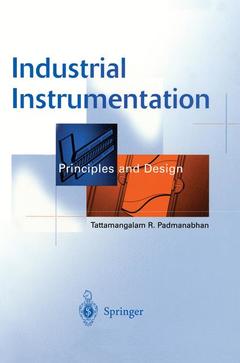Description
Industrial Instrumentation, Softcover reprint of the original 1st ed. 2000
Principles and Design
Author: Padmanabhan Tattamangalam R.
Language: English
Subject for Industrial Instrumentation:
Approximative price 158.24 €
In Print (Delivery period: 15 days).
Add to cart643 p. · 15.5x23.5 cm · Paperback
Description
/li>Contents
/li>Comment
/li>
The treatment is centred around electronic instrumentation schemes, as is the current practice
Designers will learn to understand the building blocks of control schemes, their characteristics, limitations and interface considerations so that they can structure their schemes appropriately to individual applications
The structure of control schemes is explained for applications engineers using applied schemes of various complexity




